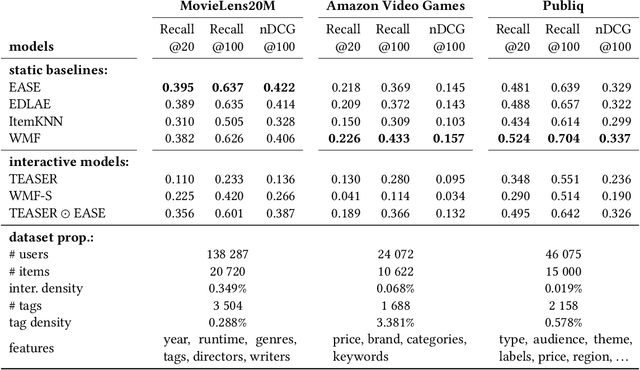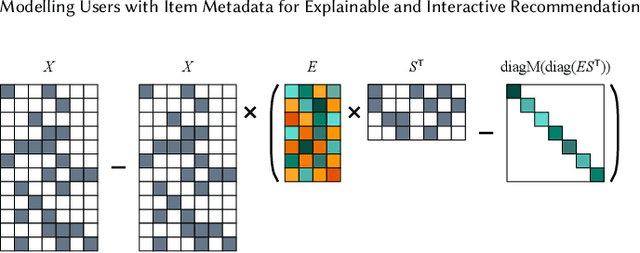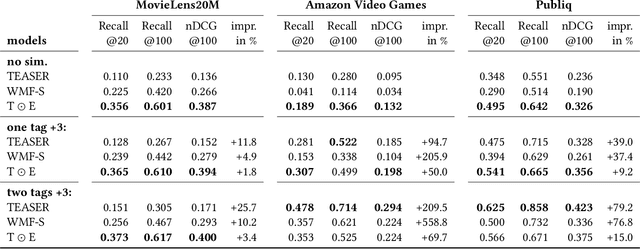Joey De Pauw
Weighted Tensor Decompositions for Context-aware Collaborative Filtering
Mar 11, 2025Abstract:Over recent years it has become well accepted that user interest is not static or immutable. There are a variety of contextual factors, such as time of day, the weather or the user's mood, that influence the current interests of the user. Modelling approaches need to take these factors into account if they want to succeed at finding the most relevant content to recommend given the situation. A popular method for context-aware recommendation is to encode context attributes as extra dimensions of the classic user-item interaction matrix, effectively turning it into a tensor, followed by applying the appropriate tensor decomposition methods to learn missing values. However, unlike with matrix factorization, where all decompositions are essentially a product of matrices, there exist many more options for decomposing tensors by combining vector, matrix and tensor products. We study the most successful decomposition methods that use weighted square loss and categorize them based on their tensor structure and regularization strategy. Additionally, we further extend the pool of methods by filling in the missing combinations. In this paper we provide an overview of the properties of the different decomposition methods, such as their complexity, scalability, and modelling capacity. These benefits are then contrasted with the performances achieved in offline experiments to gain more insight into which method to choose depending on a specific situation and constraints.
Modelling Users with Item Metadata for Explainable and Interactive Recommendation
Jul 08, 2022


Abstract:Recommender systems are used in many different applications and contexts, however their main goal can always be summarised as "connecting relevant content to interested users". Personalized recommendation algorithms achieve this goal by first building a profile of the user, either implicitly or explicitly, and then matching items with this profile to find relevant content. The more interpretable the profile and this "matching function" are, the easier it is to provide users with accurate and intuitive explanations, and also to let them interact with the system. Indeed, for a user to see what the system has already learned about her interests is of key importance for her to provide feedback to the system and to guide it towards better understanding her preferences. To this end, we propose a linear collaborative filtering recommendation model that builds user profiles within the domain of item metadata, which is arguably the most interpretable domain for end users. Our method is hence inherently transparent and explainable. Moreover, since recommendations are computed as a linear function of item metadata and the interpretable user profile, our method seamlessly supports interactive recommendation. In other words, users can directly tweak the weights of the learned profile for more fine-grained browsing and discovery of content based on their current interests. We demonstrate the interactive aspect of this model in an online application for discovering cultural events in Belgium. Additionally, the performance of the model is evaluated with offline experiments, both static and with simulated feedback, and compared to several state-of-the-art and state-of-practice baselines.
 Add to Chrome
Add to Chrome Add to Firefox
Add to Firefox Add to Edge
Add to Edge